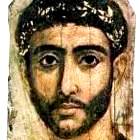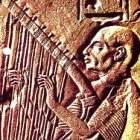Jerusalem: post-exilic Temple
Bible Study Resource
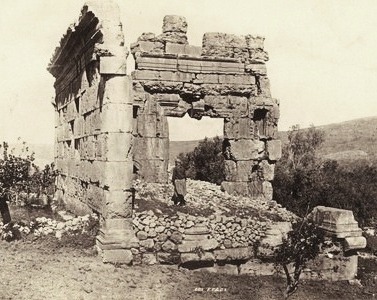
Jerusalem and its Temple were in ruins. The returning exiles faced something like this once-beautiful Phoenician temple
When Cyrus, King of Persia gave permission to the Jews to return to Israel after the Exile, they had to face a devastating loss.
- The Jewish people had been scattered
- they had lost virtually everything
- their Temple, built by Solomon, was in ruins – as was the city of Jerusalem
What did they do? They set to work, determined to restore the Temple in Jerusalem (538-9 BC).
Their new Temple (the Post-exilic Temple) was completed in 515 BC. It was small and insignificant compared to the First Temple.
But it had a more important place in the life of the nation: it became the religious and ritual centre of all Jews, wherever they were, and pilgrims flocked to it.
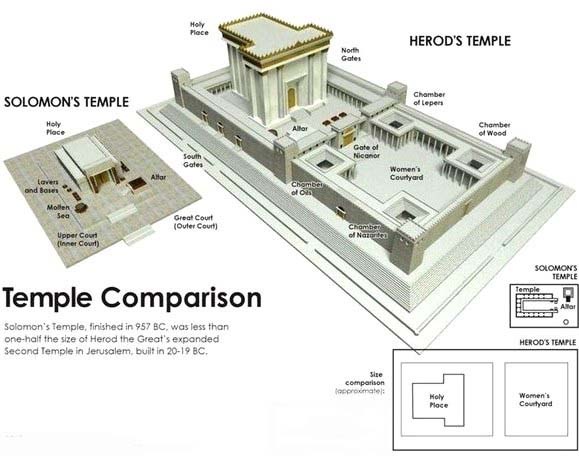
Solomon’s Temple compared with the Temple built by King Herod in the 1st century AD. The 2nd Temple was closer in scale to Solomon’s Temple.
In the pre-Exilic period, almost to the end of the Monarchy, sacrifices had been offered in many local sanctuaries as well as in the Temple; now, in post-Exilic times, sacrifices were offered only in the Temple.
Temple Services
The Temple priests, headed by the High Priest, occupied the highest position in the religious leadership of the nation.
The Temple supported this large group of priests with the revenue it received from the people: from
- tithes
- taxes
- contributions and
- occasional gifts from foreign kings in return for its support.
It must be remembered, however, that Jerusalem itself was very much reduced. The wholesale deportation of the Jewish population, and the destruction of the city itself, had wrought terrible havoc.
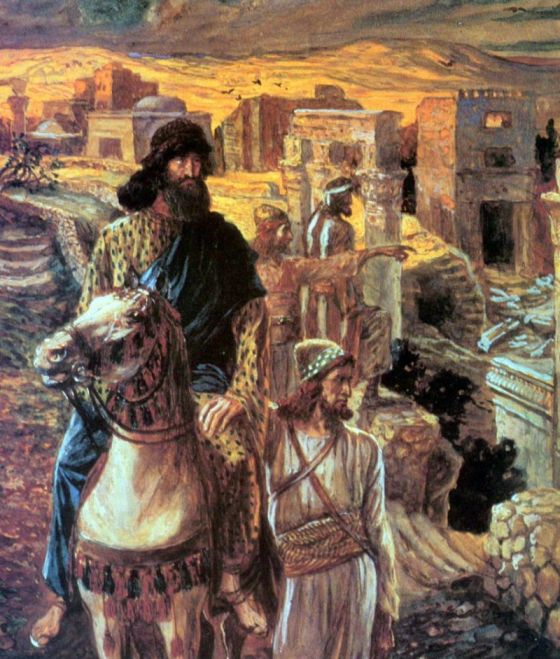
The returning Nehemiah sees the rubble of Jerusalem, James Tissot
The Jewish people were undaunted. Tremendous numbers of the faithful flocked to Jerusalem during the three great pilgrimage festivals.
The priests of the Jerusalem Temple
- The priests serving the Temple were divided into 24 watches
- the Levites were assistants to the priests, musicians and doorkeepers
- menial tasks were performed by the Nethinim.
Ordinary Jewish citizens were associated with the regular cult through the organization of 24 ‘ma‘amadot’, each of which was assigned its specific time of service in the Temple, accompanying a corresponding watch of priests.
The function of the laymen was to participate in the public sacrifices and to bring in the first fruits.
The supreme significance of the Temple came from its position as the centre for the fulfilment of the Pentateuchal injunction to offer sacrifice.
Every good Jew was bound to obey these Laws.
Trouble ahead: Graeco-Roman times
The Temple was not only the supreme Jewish sanctuary and holy place. It was also the scene of political struggle.
- For example, in 167-164BC, Antiochus IV Epiphanes issued his ‘Infamous Edicts’, under which the Temple was desecrated. As a result, the holy rituals were suspended and conservative Jews engaged in civil war with the Jewish ‘Hellenizers’.
- The Temple was reoccupied by Judas Maccabaeus who rebuilt the altar and purified and rededicated the Temple. lt resumed its lofty position in the life of the independent Jewish state, under the High Priests of the Hasmonean house.
 During one upheaval between the people and Alexander Jannaeus, the crowd of worshippers stoned him with citrons (thick-skinned citric fruit) during the Feast of Tabernacles.
During one upheaval between the people and Alexander Jannaeus, the crowd of worshippers stoned him with citrons (thick-skinned citric fruit) during the Feast of Tabernacles.- When Pompey invaded Palestine (63 BC), the supporters of Aristobulos entrenched themselves behind the Temple walls and fought the Romans. Pompey stormed the Temple and penetrated into the Holy of Holies.
The Jerusalem Temple – the three stages
1st Temple:
After King David captured the hill fortress of Jerusalem, the Ark of the Covenant was installed in a sanctuary on the Temple Mount. David’s son Solomon constructed the First Temple, completed in 957BC.
The building was not large. It had three rooms: a porch, the main room of worship, and the Holy of Holies where the Ark was kept.
A storehouse surrounded three sides of the Temple. This Temple was destroyed by Nebuchadnezzar of Babylon in 586BC. The Temple treasures, including the Ark, were lost.
2nd Temple:
The Second Temple was completed in 515BC. It was a rebuilding of the previous Temple, but on a more modest scale because the Jewish population, and Jerusalem, had been decimated.
Herod’s Temple:
Herod the Great rebuilt the Temple on a grand scale. It took 46 years to build, and was completed in 26AD.
It was used not only for worship, but as a repository for the Scriptures and a meeting place for the Sanhedrin, the highest Jewish law court.
This Temple was destroyed in 70AD after the Jewish Revolt, and its treasures taken to Rome. All that remains of it today is the Western or Wailing Wall.
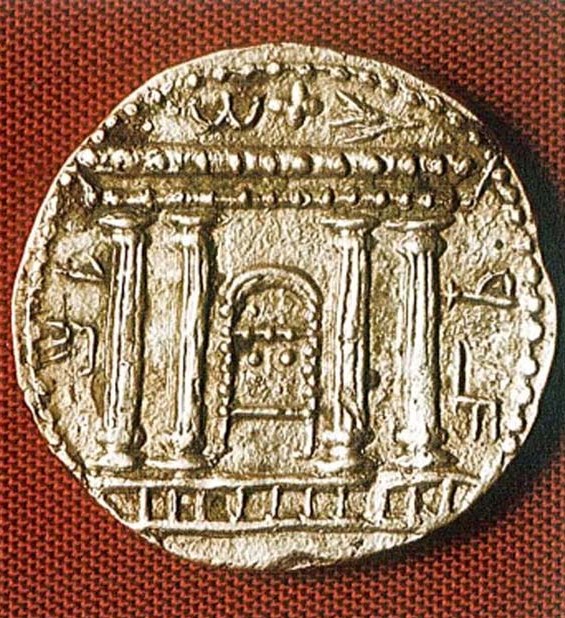
Facade of the Temple, from a coin struck by Bar Kochba in 132AD. This of course must be a representation of the Temple built by King Herod.
Search Box
![]()
© Copyright 2006
Elizabeth Fletcher

